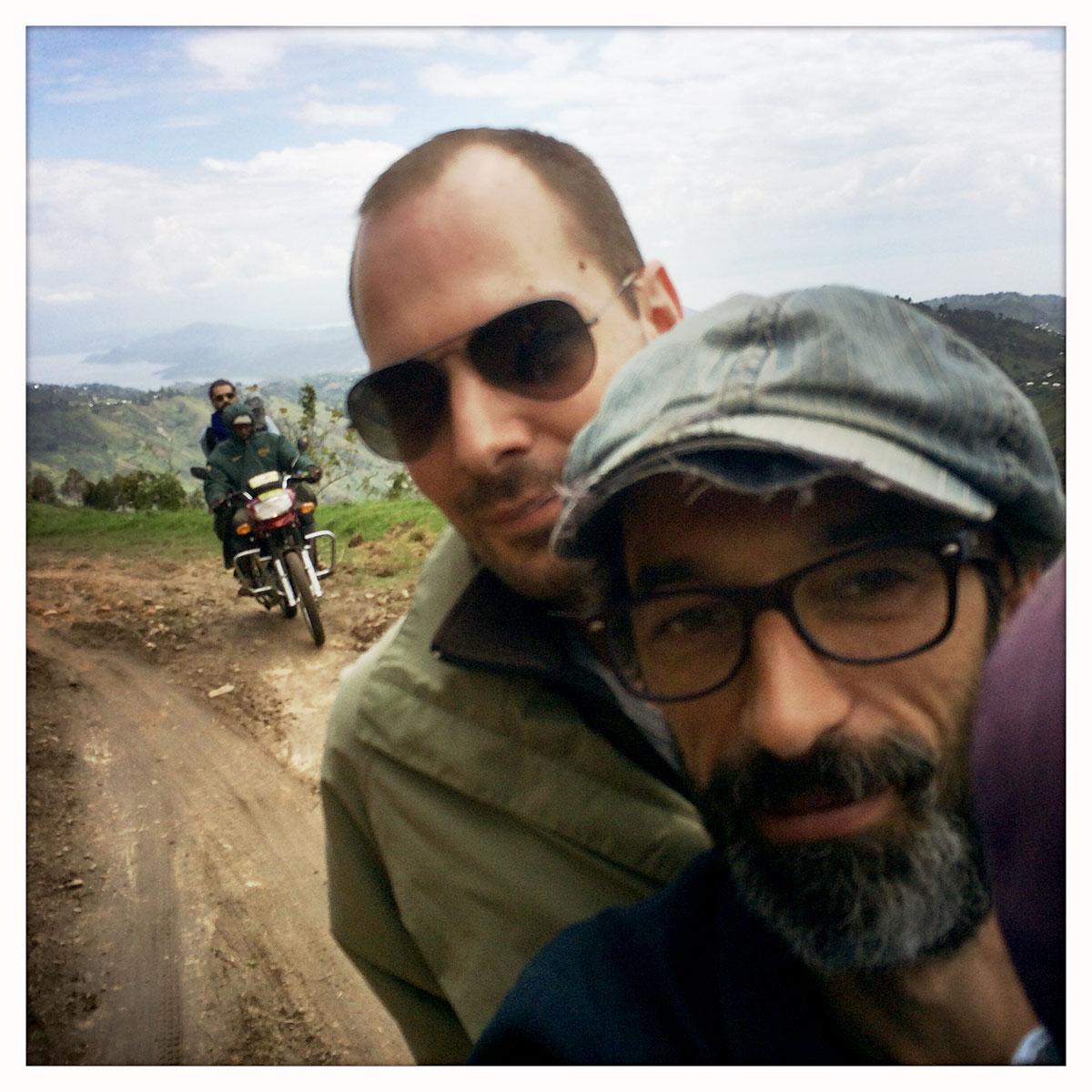THE ENEMY
Making Of
Par Fabien Barati – Part 2/7
The premises
At Emissive, we had already been working with virtual reality for many years and we were used to technological challenges. What Karim and Chloé described to me had no equivalent in the world, and was simply not possible with the existing hardware at the time. However, I had a potential solution in mind that would take advantage of various current and future technologies.
So I said yes, I was confident that we could carry out the project. This marked the beginning of a wonderful human and technological adventure!
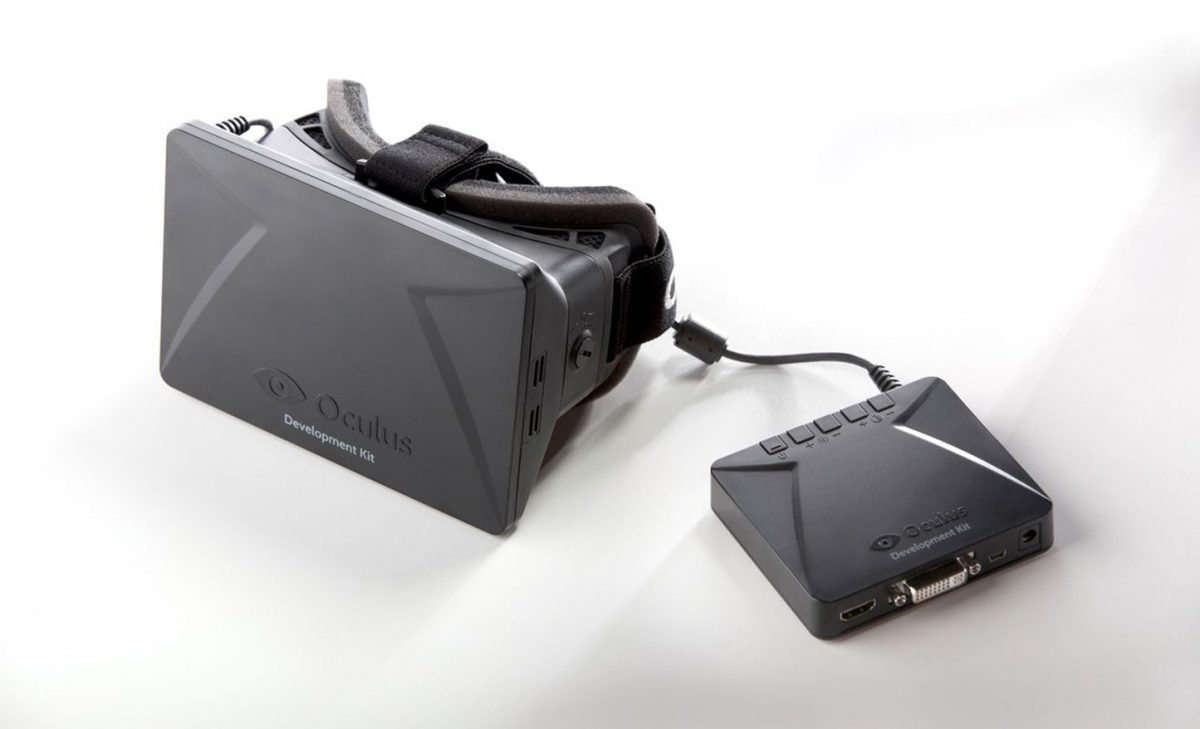
The Oculus DK1 had just come out in 2014
Virtual reality
Immersion and interactivity
The Enemy takes full advantage of this new medium: virtual reality. This technology consists in immersing the user in a virtual environment and giving them the ability to interact with it.
Immersion is achieved thanks to a 360° stereoscopic vision of the virtual world and a spatial soundscape both calculated in real time, according to the user’s movements. In terms of interactivity, the user can move freely around the virtual environment, and act on various elements. I’d like to add that with virtual reality, the user is “captive”, cut off from the real world, which they can no longer see nor hear.
These attributes create a feeling of presence, that is, the impression of actually being in another world, realistic or not. Meeting the combatants in The Enemy, we have the illusion of being face to face with real people, thanks in part to this feeling of presence. This is where virtual reality differs from traditional media such as television or written press: we are much more attentive, and above all, much more involved. In The Enemy, participants spend 50 minutes listening to interviews, and stay focused throughout.
Be mindful, I am talking about virtual reality, not 360 video. 360 video, which can also be broadcasted in a VR headset, does not allow interactions and can’t provide the necessary stereoscopy to achieve a good level of immersion. Too often, these two media are wrongly aggregated under the name “VR”.
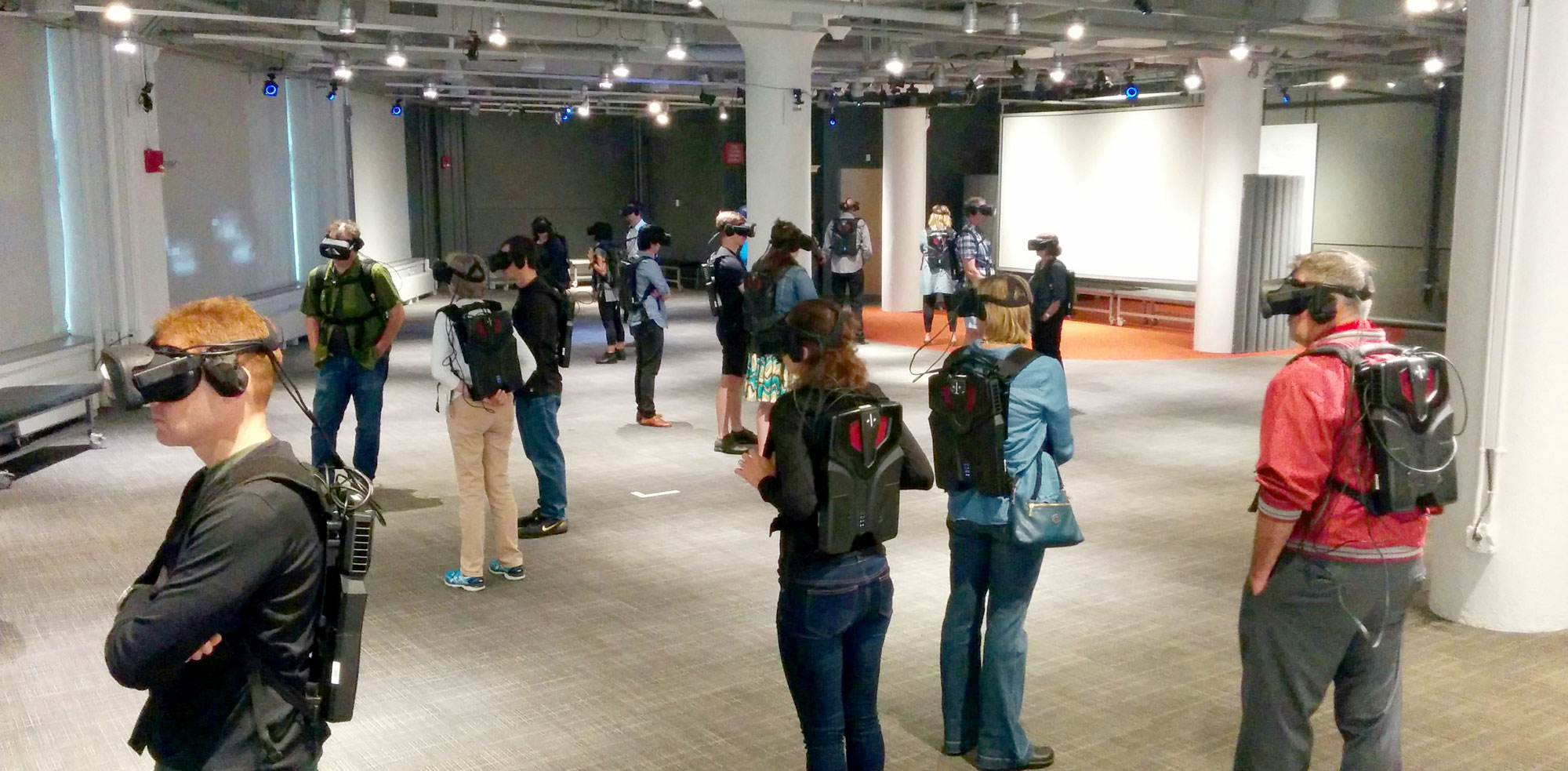
Visitors are immersed in a virtual environment where they can wander around freely
Real-time calculation
Technically, and as mentioned above, virtual reality involves calculating the images the user sees and the sounds they hear in real time. You have to take into account each movement, each action, and convert it into the VR headset within a few milliseconds: if I walk forward one meter, I have to see myself walking one meter forward in the virtual world, all at the exact same time. This is true for every movement, small or large, that participants can make.
The VR headset displays 90 images per second, which are calculated live by a computer. One is required for each participant. That’s why we are all equipped with a backpack (which is in fact a powerful computer) to which the VR headset is connected.
There are now “standalone” headsets that embark their own computing power: you no longer need a backpack. However they are not powerful enough to run such qualitative experiences as The Enemy.
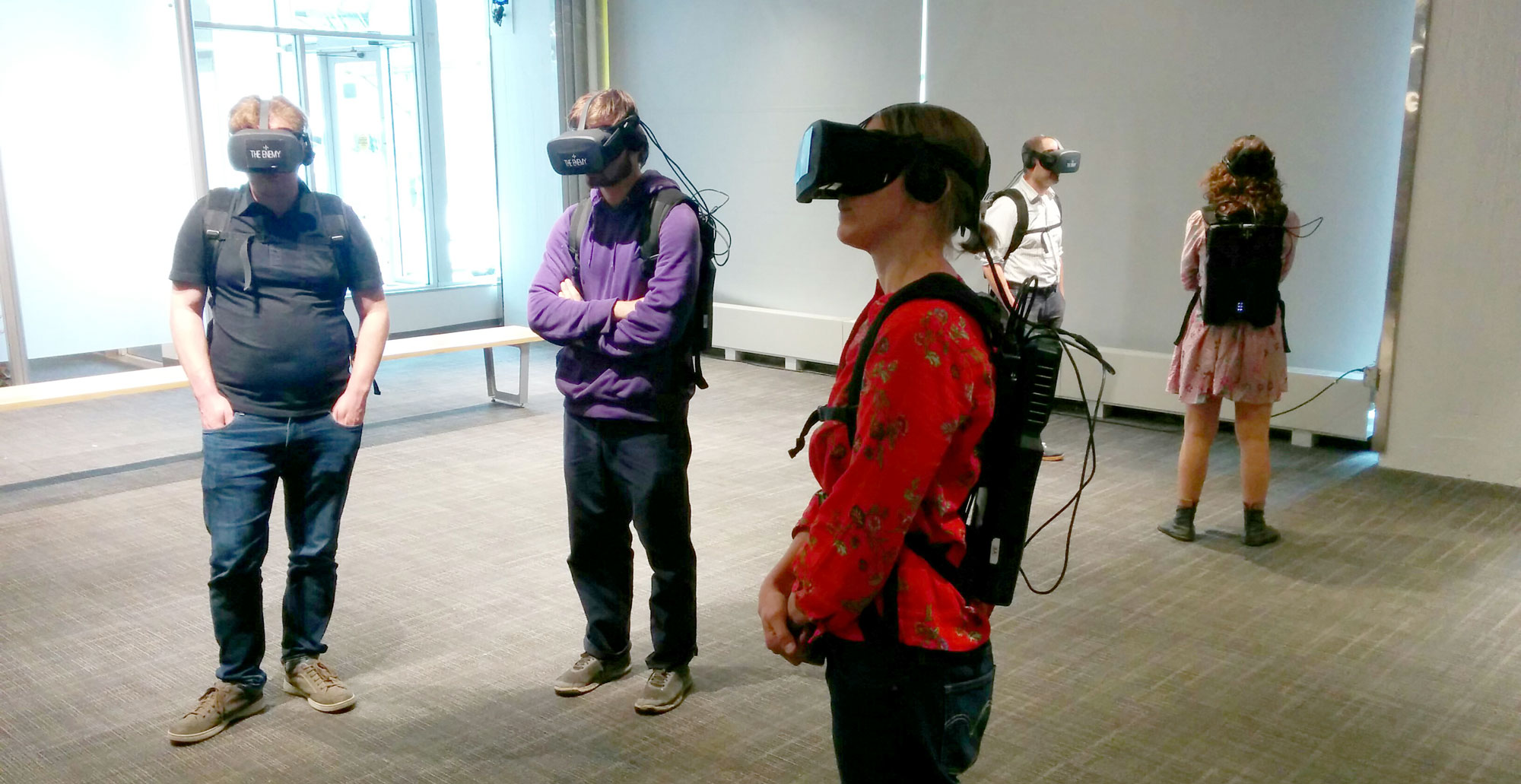
Visitors are equipped with a VR headset and a backpack-PC
Recording in war zones
To design these virtual combatants, we had to start from sources captured in the field, in war zones. The Enemy features three conflicts: the Israeli-Palestinian conflict, the aftermath of the Rwandan civil war in Congo, and gangs in El Salvador.
These exceptional circumstances prevented us from using systems that were too cumbersome or too intrusive: motion capture with markers, photogrammetry studio, videogrammetry, etc.
We had to travel light and be able to install and pack up our equipment swiftly.
The need to create realistic virtual combatants within these constraints was one of the criteria for integrating Emissive into the project.
So I explained to the production team what we needed: a lot of photos, videos from different angles with sound recording and a neutral background. I also had the idea of using a portable 3D scanning system and non-intrusive motion-capture software.
This conditioned both the material to bring and the team to send on site:
- Karim Ben Khelifa who conducted the interviews
- Jean-Gabriel Leynaud, director
- Selim Harbi, photographer and technical assistant
- And myself for motion capture, 3D scanning and validating source quality
Preparations
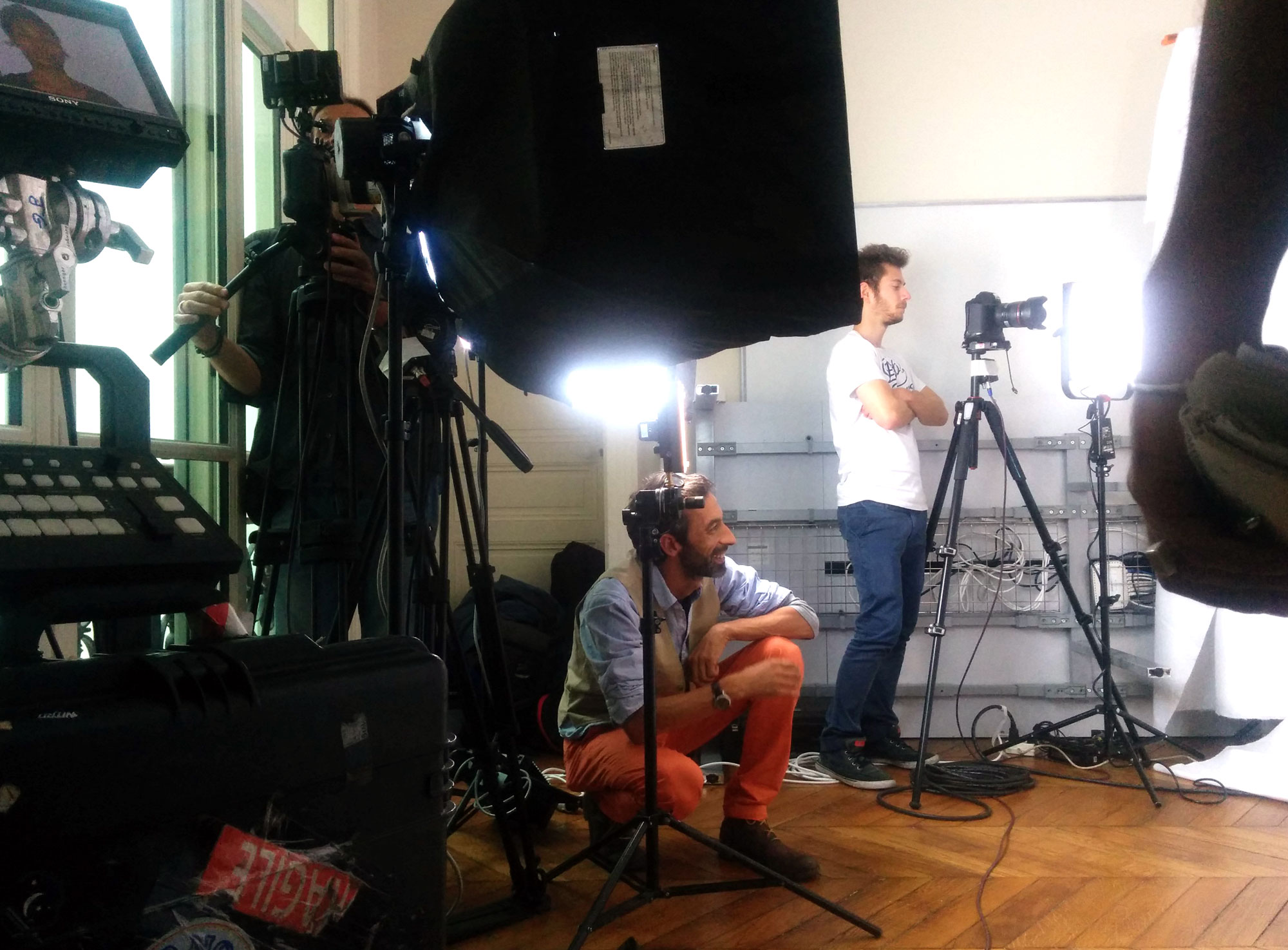
Capture tests at Emissive officesHere with Karim, Jean-Noël et Thibault Bernard.
So we left with 4 cameras capable of shooting high-frequency videos, equipment to construct a white floor and background, microphones and lights. I also brought with me two Microsoft Kinects and a computer.
MAKING OF

Emissive
71 rue de Provence
75009 Paris – FRANCE
+33 1 49 53 09 26
